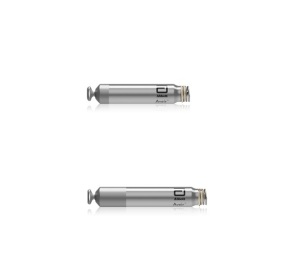by
John R. Fischer, Senior Reporter | July 10, 2023

Abbott's AVEIR dual chamber (DR) leadless pacemaker
With FDA approval now under its belt, Abbott is preparing to release the world’s first dual chamber leadless pacemaker in the U.S., which does not require cardiac leads, reducing risks of infection and complications from lead exposure, and shortening implant and recovery time.
In the past, leadless pacemakers were restricted to a single chamber, and required thin insulated wires, along with battery powered devices, to transmit electrical signals to the heart to synchronize normal rhythm. The installation of these leads created scar tissue, and removing the device required cutting the leads and replacing them, which risked damaging or tearing the heart and blood vessels.
Abbott’s AVEIR dual chamber (DR) leadless pacemaker consists of the company’s FDA-approved AVEIR VR and AR single chamber devices for pacing the heart’s right ventricle and right atrium, respectively. Using the company's proprietary i2i technology, the two devices deliver messages to one another via high-frequency impulses transmitted through the blood, reducing battery use by using the body's electricity.
Each has a paired, co-implanted device to faciliate communication beat-to-beat, and is implanted in a minimally invasive procedure that leaves no scarring and allows patients to recover faster. Additionally, the dual chamber solution can be replaced by taking out a screw-in mechanism called the helix that attaches the device to the heart's interior surface.
Dr. Leonard Ganz, DVP and CMO at Abbott, told HCB News that while "all patients" in need of a dual-chamber pacemaker are eligible for AVEIR DR, he anticipates the rate of adoption to initially "vary" among physicians, who generally are hesitant to adopt new technologies. Still, he expects it to bring "tremendous value" by lowering the risk of long-term complications.
Lead-based implants can often become displaced, causing chest pain, dyspnea, syncope, abdominal pain, or left chest muscle twitching. The AVEIR DR pacemaker provides real-time pacing analysis for physicians to determine where it should be placed during procedures and before implanting it.
It also is roughly one-tenth the size of a traditional pacemaker, giving patients more physical freedom to do activities.
The AVEIR DR i2i Investigational Device Exemption (IDE) study, published in June in
The New England Journal of Medicine, showed that implants were successful 97% of the time in synchronizing upper and lower chamber heartbeats, and that 98.3% of physicians were successful in using it for implants.
Back to HCB News
